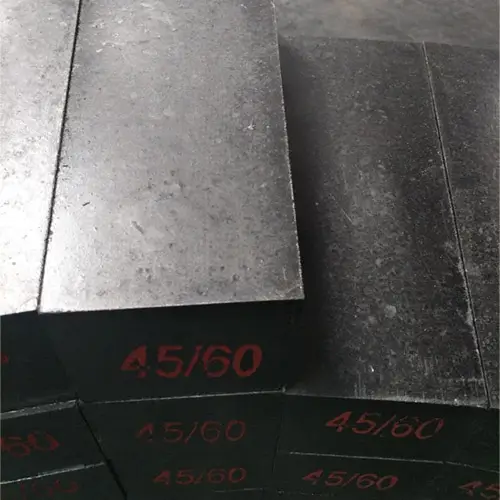Waste refractory materials can be used as secondary raw materials after simple picking, crushing and other initial processing. Generally to a small amount added to the production process of higher quality products, or add a higher proportion to the metallurgical auxiliary materials and other low value-added products. The economic and social benefits generated by the initial processing and reuse are low, but it solves the environmental problems and avoids environmental pollution. Such as steel mills after the use of magnesium carbon bricks after crushing, as a metallurgical auxiliary materials for direct use in steel mills: after the use of aluminium magnesium carbon bricks, after broken and crushed into different particles, added to the aluminium and magnesium carbon bricks dosage of the production process; after the use of refractories after broken and crushed into paving materials and metallurgical slagging agent, and so on.
In addition, waste refractories can also be refined and reduced to high-quality raw materials. After being processed into different granules by simple picking and crushing, in order to improve its utilisation, physical and chemical means are used to process it, so that its physical and chemical properties are closer to the level of the original raw materials. The quality of the products is further improved and high value-added products are obtained. The following are examples:
1.Recycled high quality magnesium carbon bricks
Researchers in the use of magnesium carbon bricks for in-depth study found that after the use of magnesium carbon bricks after processing can be used as the main raw material for the production of magnesium carbon bricks, Baosteel converter and ladle slag line bricks as the raw material for the production of regeneration of magnesium carbon bricks the largest proportion of joining up to 80%, and the production of regeneration of magnesium carbon bricks of the various physicochemical properties of the index is close to the ferrous metallurgical industry standard of the level of A grade. The regeneration of magnesium carbon bricks applied to 300t ladle slag line, the service life of 82 times (of which 20 times LF refining), slag line at the most serious erosion rate of 1.28mm per furnace, slightly better than the same period of use of the new magnesium carbon bricks level.
A large domestic steel plant on the magnesium aluminium carbon steel cladding bricks after the use of refractory materials for regeneration aspects of the test. It can be seen that their performance are close to or reach the level of new products.
2.Recycled high quality magnesium and magnesium-chromium bricks
Steel mills with 85% raw material and 15% new material production of electric furnace pool parts with non-burning magnesium bricks; and all with recycled material production of RH bottom firing magnesium-chromium bricks, etc., the use of its effect and the original brick is basically the same.

3.Recycled electrofused magnesium sand
The used magnesium-carbon bricks after crushing are calcined above 1000℃ to oxidise all the carbon in them and separate out the electrofused magnesium sand. The obtained electrofused magnesium sand has no agglomerates, and the physical and chemical indexes basically reach the level of new electrofused magnesium sand. With such electrofused magnesium sand as the main raw material, it can regenerate high quality magnesium carbon bricks, magnesium bricks and other magnesium refractory materials.
4.Recycled other new materials
By the oxide and non-oxide composite materials composed of after-use refractory materials, through the introduction of some other materials or the use of chemical high-temperature physical reaction can be obtained high value-added new materials. Such as through the purification and reaction to produce metal chromium, through the synthesis of carbon and nitrogen reduction nitride reaction synthesis SiAlON, SiC, AIN and other high-performance non-oxide materials.
Countries all over the world are fully aware of the fact that after-use refractories are cheap renewable resources, which can significantly improve the economic and social benefits of enterprises and become valuable resources. The recycling of post-consumer refractories is also a contribution to environmental protection, so they attach great importance to the development and research of post-consumer refractories, and through scientific and technological development, improve the scientific and technological content of post-consumer refractories and value-added materials, and rapidly improve the reuse rate, so as to make it to the zero-abrasive tendency to the development of post-consumer refractories recycling prospects.

